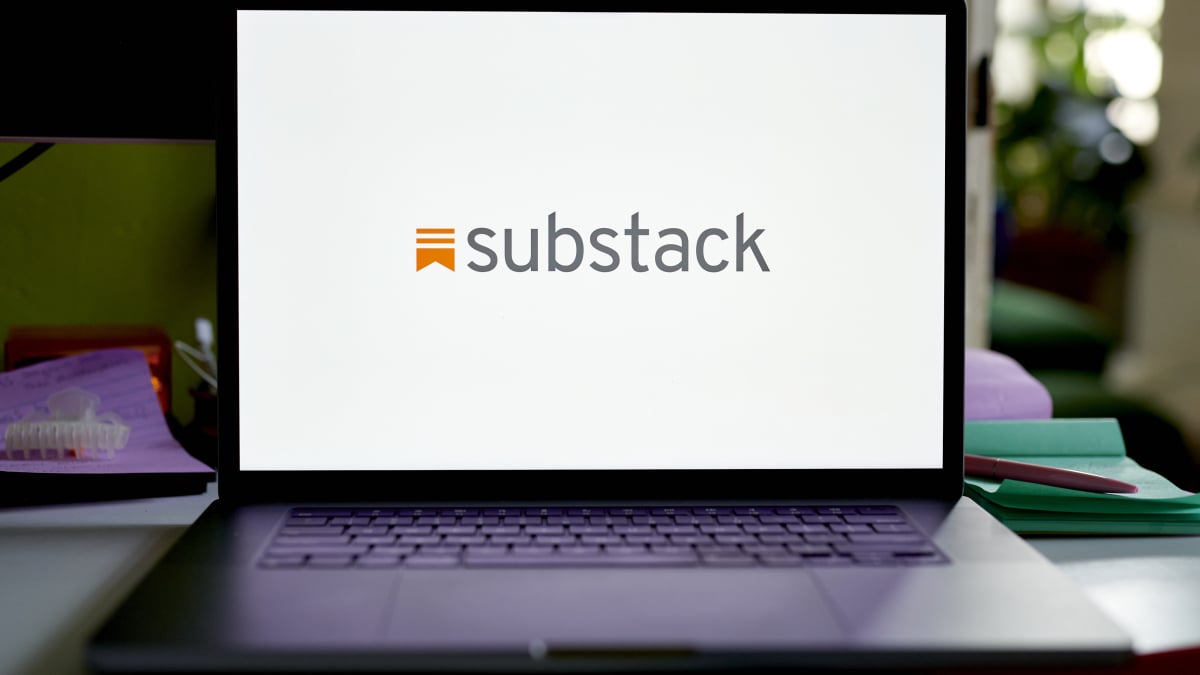Entertainment
Why are people leaving Substack?

Substack, the popular newsletter publishing platform toting millions of subscribers, is at the center of a user quagmire in 2024: Should we stay or should we go?
In a recent article by The Atlantic, the platform was called a “ticking time bomb” of content moderation issues, which have prompted several prominent blogs and writers to publish scathing indictments of the site before ceremoniously leaving the platform.
The company has faced other battles in the last year as well, including a brief feud with Elon Musk-owned X/Twitter. So why are users ushering in the new year by exiting the site now?
Users demand content moderation and accountability
In Nov. 2023, the Atlantic published an investigation into growing networks of white nationalists hosting alt-right and neo-Nazi blogs on Substack. Seemingly against terms of service that ban hate on the platform, the frequently antisemitic blogs were generating consistent revenue for both the publishers and Substack itself, which takes a portion of subscription revenue.
In response, hundreds of writers issued an open letter to Substack asking for an explanation. Later, another group of writers and fans published a letter in support of subscriber freedom and opposing increased content moderation.
On Dec. 21, Substack co-founder Hamish McKenzie uploaded a blog post responding to outcries over “fringe accounts,” saying: “I just want to make it clear that we don’t like Nazis either — we wish no-one held those views. But some people do hold those and other extreme views. Given that, we don’t think that censorship (including through demonetizing publications) makes the problem go away — in fact, it makes it worse.”
As of January, Substack had removed only a few of the offending blogs pointed out by fellow users. Thus rested an age-old internet question: How far should a platform — or “content host,” in this instance — intervene in its user base, and what kind of protection does it owe those scrolling its site?
Casey Newton, creator of the Silicon Valley news blog Platformer, announced on Jan. 11 that the blog would be leaving Substack due to the ongoing content moderation issues and the lackluster response of Substack officials to removing alt-right content. The post (subhead: “We’ve seen this movie before — and we won’t stick around to watch it play out.”) also details his own effort to have antisemitic blogs removed from the site.
“As all of this unfolded, I spoke twice with Substack’s co-founders. And while they asked that those conversations be off the record, my understanding from our conversations — based on material they had shared with me in writing — was that in the future they would regard explicitly Nazi and pro-Holocaust material to be a violation of their existing policies,” Newton described of his and fellow Substack publishers’ efforts. “But on Tuesday, when I wrote my story about the company’s decision to remove five publications, that language was missing from their statement. Instead, the company framed the entire discussion as having been about the handful of publications I had sent them for review.”
Other newsletter publishers, including popular writer Ryan Broderick, were similarly disappointed in the response. In his announcement, Broderick wrote that Substack “has a habit of turning these, frankly, fairly basic trust and safety problems into weird political fights that drag on for weeks.”
“Substack has faced occasional controversies over its laissez-faire approach to content moderation,” Newton explained. “The platform hosts a wide range of material I find distasteful and offensive. But for a time, the distribution of that material was limited to those who had signed up to receive it. In that respect, I did not view the decision to host Platformer on Substack as being substantially different from hosting it on, for example, GoDaddy. Substack’s aspirations now go far beyond web hosting.”
Pure web hosting has fallen by the wayside
In addition to the questionable content decisions of Substack leads, many posting on the site have shared a wariness of the platform’s evolving mission and its impact on independent writers, a shift from the site’s original marketing as an ambiguously defined content hosting site without the ambition of mainstream publishers and social media sites.
But in April 2023, Substack launched its Notes feature, a “Twitter dupe” that allows Substack subscribers and writers to share posts, links, snippets, you name it, in a streamlined feed mirroring the X timeline. “Notes also marks the next step in our efforts to build our subscription network — one that puts writers and readers in charge, rewards great work with money, and protects the free press and free speech,” Substack wrote in a blog post at the time.
Meanwhile, the platform was under careful watch from financial reporters, following the revelation of the platform’s 2020-2021 financial statements (the numbers were grim). Substack had recently launched a site-wide crowdfunding campaign, as well, generating more than $7 million from users.
Some writers note that they feel the broad push for “the Substack network” — referring to the growing connections between its community of writers, subscription recommendations, and new features like Notes — runs counter to the organic discovery and subscription models that enticed them to join initially.
This all signaled to many that the hands-off, pure content hosting goal of the platform was shifting, pushing the site closer to the realm of an advertising social media company instead of an avenue for independent publishing, fostering small communities of self-moderated readers and writers.
As Newton warned in his departure post, Substack:
“touts the value of its network of publications as a primary reason to use its product, and has built several tools to promote that network. It encourages writers to recommend other Substack publications. It sends out a weekly digest of publications for readers to consider subscribing to. And last year it launched a Twitter-like social network called Notes that highlights posts from around the network, regardless of whether you follow those writers or not. Not all of you use these features. Some of you might not have seen them. But I can speak to their effectiveness: In 2023, we added more than 70,000 free subscribers. While I would love to credit that growth exclusively to our journalism and analysis, I believe we have seen firsthand how quickly and aggressively tools like these can grow a publication. And if Substack can grow a publication like ours that quickly, it can grow other kinds of publications, too.”
Where are people turning to now?
Substack remains a popular site for writers, cultural commenters, film critics, and even journalists, but disenchanted users are seeking out alternatives. Some are turning toward other hosting sites like Ghost and Beehiiv, the Atlantic reports.
The decision is in your hands.
-

 Business6 days ago
Business6 days agoAI chip startup DEEPX secures $80M Series C at a $529M valuation
-

 Entertainment5 days ago
Entertainment5 days agoJinkx Monsoon promises ‘the queerest season of ‘Doctor Who’ you’ve ever seen!’
-

 Business5 days ago
Business5 days agoStrictlyVC London welcomes Phoenix Court and WEX
-

 Business7 days ago
Business7 days agoRetell AI lets businesses build ‘voice agents’ to answer phone calls
-

 Entertainment5 days ago
Entertainment5 days agoHow to watch every ‘Law and Order’ online in 2024
-

 Entertainment5 days ago
Entertainment5 days agoBookTok and teens: What parents need to know
-

 Business4 days ago
Business4 days agoWhy Apple’s ‘Crush’ ad is so misguided
-

 Entertainment6 days ago
Entertainment6 days ago'House of the Dragon' recap: Every death, ranked by gruesomeness




























